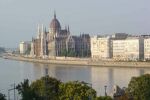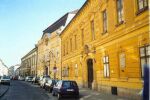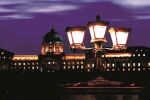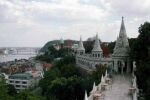
Budapest, one of the most beautiful historical capitals in Europe, is situated on the banks of the Danube. The city actually consists of three cities: Óbuda, the oldest section, with Celtic and Roman ruins, Buda in hills on the western bank, famous for its historic Castle Hill and beautiful residential area, and bustling Pest with its shopping, government and commercial districts on the flat plain of the east bank. United in 1873, Budapest is renowned as the location of one of the most beautiful World Heritage sites.

Turn of the century Budapest was rightly considered the birthplace of the modern world. World War I proved disastrous. Partitioned into almost one-third its original size, millions of ethnic Hungarians found themselves living outside the country. Soviet occupation followed after World War II as Stalinism lowered its iron curtain across Central Eastern Europe. On 23 October 1956 a revolution aimed at restoring democracy broke out against the communist dictatorship. On 23 October 1989, in commemoration of the revolution against the communist dictatorship, the Third Hungarian Republic was declared. Hungary, as a result of the multi-party elections of the 90s, has been undergoing great economic and political development within the democratic, parliamentary system. Hungary has become a member of NATO and, after carrying out successful negotiations the country will be the member of the European Union, the accession will take place in May 2004. The participants of HBM 2004 will be among the first to catch the feeling of a country with a brand new membership of the European Union.

Only Budapest can say of itself that it has Europe's largest Parliament, largest functioning synagogue and the continent's first underground railway. The architectural beauty with its monuments from neo-classic through baroque to eclectic art nouveau is prevalent in the city. Budapest is also world famous for its artistic abundance of concerts, operas, recitals, galas, exhibitions and spa baths.

The Castle District is one of the most romantic pedestrian sections in Buda. A medieval little town with atmospheric streets, houses, beautiful monuments and gas lamps. The winding streets and narrow houses date back to the Middle Ages, occasionally decorated with valuable Gothic window and door frames.

The Royal Palace, at the top of Castle Hill, erected in the 14th century and rebuilt in Baroque style 400 years later, was the residence of Hungarian kings for 700 years. Today it embraces the most visited museums and galleries in Budapest, such as the Budapest Historical Museum, Hungarian National Gallery and National Library.

The 700-year old Matthias Church with its Gothic spire and multi-colored tiled roof is where the nation's kings were crowned. Now it is the site of organ and choir performances. Be sure to catch the sunset at Fisherman's Bastion, with its view of the river, Chain Bridge, Parliament building and Pest across the horizon. Built at the turn of the century, the building of the Parliament quickly became a dominant sight and symbol of Budapest and the Danube panorama. A typically Eclectic edifice with a lot of small spikes and stone lace ornamentation, it is one of the most decorative structures of the capital. You will see the legendary crown jewels of King Stephen, which have a spectacular history, having been stolen or misappropriated at various times since the Middle Ages. After World War II, fleeing Hungarians brought them to the United States for safe-keeping. Former President Jimmy Carter returned them to Hungary in 1978.

The Byzantine-looking Dohány Street Synagogue with 3,000 seats, is Europe's largest synagogue and the world's second largest after New York's Temple Emanu-El. Its excellent acoustics also make it suitable for concerts. The Jewish Museum, set up in its courtyard, has one of the most outstanding Judaic collections of Central Europe.

It is worth walking along the strictly straight Andrássy Boulvard. Both sides of the Boulvard are lined by eclectic 19th and 20th century mansions designed with artistic thoughtfulness, and one of the most beautiful opera houses in the world. The first director was Ferenc Erkel, Gustav Mahler held this post for several years, and Puccini directed the premiere of two of his operas here. Renowned guest conductors include Otto Klemperer, Sergio Failoni and Lamberto Gardelli. It is still one of the best opera houses in Europe.

The city is also famous for its one of Europe`s largest bath complexes, in fact there is no other capital city in the world with almost 100 thermal springs and 12 medicinal baths within its boundaries, where 19 million gallons of thermal water rise to the surface each day. The atmosphere of Roman bathing culture may be felt in its light, spacious pool halls, while Greek bathing culture is reflected in the tub baths, but traces of Nordic traditions may also be found in the heat chambers, saunas and dipping pools.

Do as Budapesters do and unwind over strong coffee and sweet cake in an old, cozy café. There were more than 400 coffeehouses in Budapest at the turn of the 20th century, attracting everyone from soldiers and aristocrats to poets and actors, and some of the best are still in business today.

The warm hospitality of people, excellent food and wine, reliable and frequent public transportation, vivid cultural life, rich museums, attract millions of visitors every year.